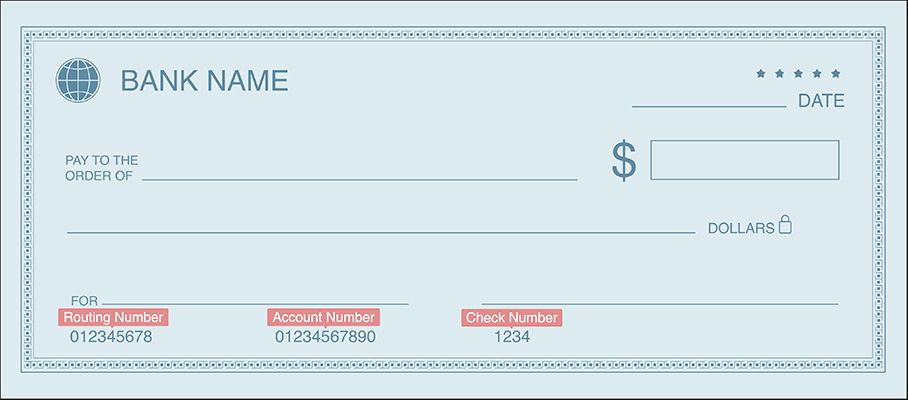Balancing your checking account may seem like a task straight out of a bygone era, akin to winding a grandfather clock or sewing buttons onto a shirt.
However, the reality is quite different. It is an essential financial task, one that could help you dodge hefty overdraft charges, detect fraud early, and provide a true understanding of your spending patterns. So, let’s clarify this often misunderstood task.

Key Takeaways
- Balancing your checking account regularly is essential for avoiding overdraft fees, identifying fraudulent transactions, and understanding your spending patterns to better manage your finances.
- Use tools and technology like online banking apps, spreadsheets, or traditional checkbook registers to keep accurate records of transactions, which helps with reconciling your bank statement and checkbook register.
- Address discrepancies quickly by checking your recent transactions and contacting your bank if necessary, ensuring any errors or potential fraud are handled promptly to maintain account accuracy.
The Importance of Balancing Your Checking Account
Regularly balancing your checking account is a cornerstone of sound money management. It’s not just about avoiding those pesky overdraft fees (though that is a significant bonus), it also provides invaluable insights into your spending habits. This will enable you to track your progress towards your money goals and make adjustments as necessary.
A balanced checkbook gives you a clear view of your financial accounts, showing you what’s going in, what’s going out, and most importantly, what’s left. By keeping track of all your transactions, you’ll be able to spot if a wrong amount has been deducted or if a direct deposit hasn’t been made. This can also help you to detect fraud at the earliest opportunity, helping to safeguard your hard-earned money.
Checking Account Basics: Key Terms and Concepts
To successfully balance your checking account, you need to understand the basic components of it. By understanding these terms, you’ll be better equipped to manage and reconcile your checking account.
Debit Card: Your bank will likely issue you a debit card that allows you to access the funds in your checking account electronically. When you make a purchase with your debit card, funds are withdrawn directly from your account. It’s important to keep track of all transactions made with your debit card to ensure your records accurately reflect your spending.
Pending Transactions: These are transactions that have been made but have not yet been fully processed by your bank. They are usually deducted from your available balance, but may not be reflected in your current balance until the transaction has fully cleared.
Bank Balance: This is the amount of money in your checking account at any given time. It’s important to note that your bank balance can change frequently throughout the day as deposits and withdrawals are made.
Monthly Statement: This is a summary provided by your bank of all transactions into and out of your account over a particular period, typically a month. The monthly statement includes the dates and details of your transactions, the balance at the beginning and end of the period, and any charges incurred. So, carefully review your monthly statement each month to identify any potential errors or fraudulent activity.
Automatic Payments: These are recurring payments set up to pay bills directly from your checking account. They are convenient for paying regular bills, such as utilities or subscriptions, but can lead to overdrafts if not properly accounted for in your balance.
Overdraft Fees: If you withdraw more money than you have available in your checking account, you’ll likely be charged an overdraft fee by your bank. Regularly balancing your checkbook can help you avoid these costly fees.
Tools Needed for Balancing a Checking Account
The tools you need for checkbook balancing can be as simple or as complex as you’d like them to be. The traditional approach involves using a paper checkbook register, a bank statement, a pen, and a calculator. But in our digital age, we have online and mobile banking tools at our disposal, and a host of other tools to make this process much simpler.
You might choose to use Google Sheets or another spreadsheet software to create a check register. You can also use mobile banking apps that provide real-time updates on your transactions, making it much easier to keep up with your account activity.
How to Balance Your Checking Account
So, how do you actually balance a checkbook? Here’s a step-by-step guide, using the traditional checkbook register method.
Step 1: Gather Information
Start by gathering all your receipts, ATM slips, deposit slips, and bank statements. If you have access to online banking, make sure to check your account for any recent transactions that haven’t yet made it onto your paper statement.
Step 2: Record Transactions
Write down every transaction in your checkbook register. This should include deposits, checks, debit card purchases, ATM withdrawals, bank fees, and any other financial transactions. Doing this ensures your records match your bank’s records, making it easier to detect any errors or discrepancies.
Step 3: Reconcile Your Check Register With Your Bank Statement
Review your bank statement for any additional charges or deposits that you might have missed. Make sure to update your check register with these transactions. Then, add up all the deposits, and subtract all the payments and withdrawals to calculate your checking account balance.
Step 4: Calculate Your Balance
The balance in your checkbook should match the current balance in your bank account. If they do not, you will need to check your calculations and go through each entry to identify any potential errors or discrepancies. This step helps you ensure the available balance matches your own records.
Step 5: Address Any Discrepancies
If the balances do not match, start by checking for common errors, such as transposing numbers or forgetting to record transactions. Check your receipts and the online banking portal to ensure you haven’t missed any transactions. If you find any transactions posted to your account that you did not authorize, contact your bank immediately.
Regular Maintenance and Good Habits
Balancing your checkbook is not a one-time activity. It’s a habit that needs to be developed and maintained. Aim to do this at least once a month when your bank statement arrives. For those who frequently use their debit cards, write checks, or have a lot of automated payments, weekly check-ins might be beneficial to ensure all transactions are recorded correctly.
Maintaining a balanced checkbook may also prevent you from spending more than what’s available, thereby avoiding overdraft charges. It also helps in tracking your spending habits and understanding your spending patterns, which can be instrumental in managing financial matters.
The Role of Technology in Balancing Your Checking Account
In our digital age, technology plays a significant role in simplifying the process of balancing checking accounts. Online and mobile banking apps provide a real-time view of your account, enabling you to check your current balance, deposit checks, and monitor transactions from anywhere, at any time. This gives you the flexibility to manage your financial tasks on the go, reducing the time and effort required for this task.
On the other hand, while these apps are extremely useful, you may still want to maintain your own records. The balance shown on these apps might not reflect pending transactions or paper checks that haven’t cleared yet.
Conclusion
Balancing your checking account is an essential component of sound financial management. It’s not just about avoiding fees and detecting potential fraud. It’s about taking control of your money and understanding how you’re using it. With the right tools and a bit of discipline, you can make this task part of your regular financial routine.
Frequently Asked Questions
How often should I balance my checkbook?
It’s generally recommended to balance your checkbook once a month. However, if you frequently use your debit card or have numerous automatic payments, you might want to consider balancing your account on a weekly basis. Regularly keeping track of your financial transactions will help you avoid errors and keep a close eye on your spending habits.
Is it safe to balance my checkbook online?
Online and mobile banking apps are generally safe to use. Most banks provide strong encryption and security measures to protect your data. However, always ensure you’re using a secure network when accessing your bank account online and update your apps regularly to get the latest security features.
What should I do if I find a fraudulent transaction in my account?
If you notice a transaction that you did not authorize, you should report it to your bank immediately. Most banks have policies in place to protect customers from fraud, and you may not be responsible for any fraudulent charges if they’re reported in a timely manner.
What’s the difference between my current balance and my available balance?
Your current balance is the total amount in your account at the start of the business day. This includes all transactions, like deposits and withdrawals, that have been posted to your account. On the other hand, your available balance is your current balance minus any holds (like pending transactions).
How can I avoid overdraft fees?
One way to avoid overdraft fees is by keeping an accurate record of all your transactions. By knowing exactly how much money is in your account at all times, you can avoid spending more than what’s available. Some banks also offer overdraft protection services that link your checking account to a savings account or credit card to cover any overdrafts.
How can balancing my checkbook help with my budget?
Balancing your checkbook gives you a clear understanding of how much money is coming in and going out of your account. This can help you identify spending patterns, prioritize your spending, and set realistic budgets.
I rarely write checks. Do I still need to balance my checkbook?
Yes, even if you don’t write checks, balancing your checkbook is still essential. Any type of transaction, be it debit card transactions, automatic payments, or ATM withdrawals, can cause discrepancies in your account balance. By balancing your checkbook, you can ensure that your account has the correct balance and catch any errors or fraudulent transactions.
I’ve made a mistake and my account is overdrawn. What should I do?
If you realize that you’ve made a mistake and your account is overdrawn, it’s important to address it as quickly as possible. Deposit money into your account to cover the overdraft and any associated fees. Then, review your recent transactions to understand what led to the overdraft and how you can avoid it in the future.



